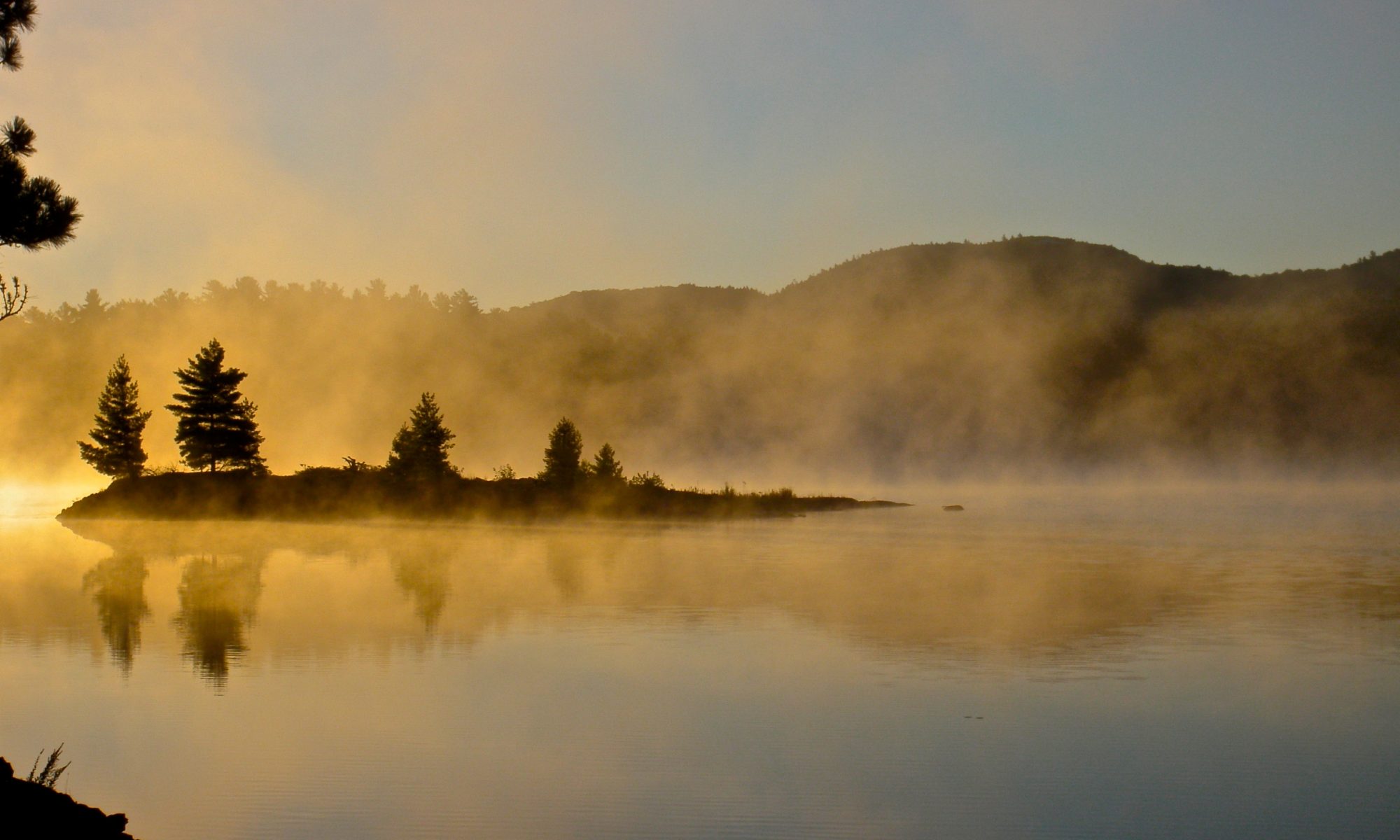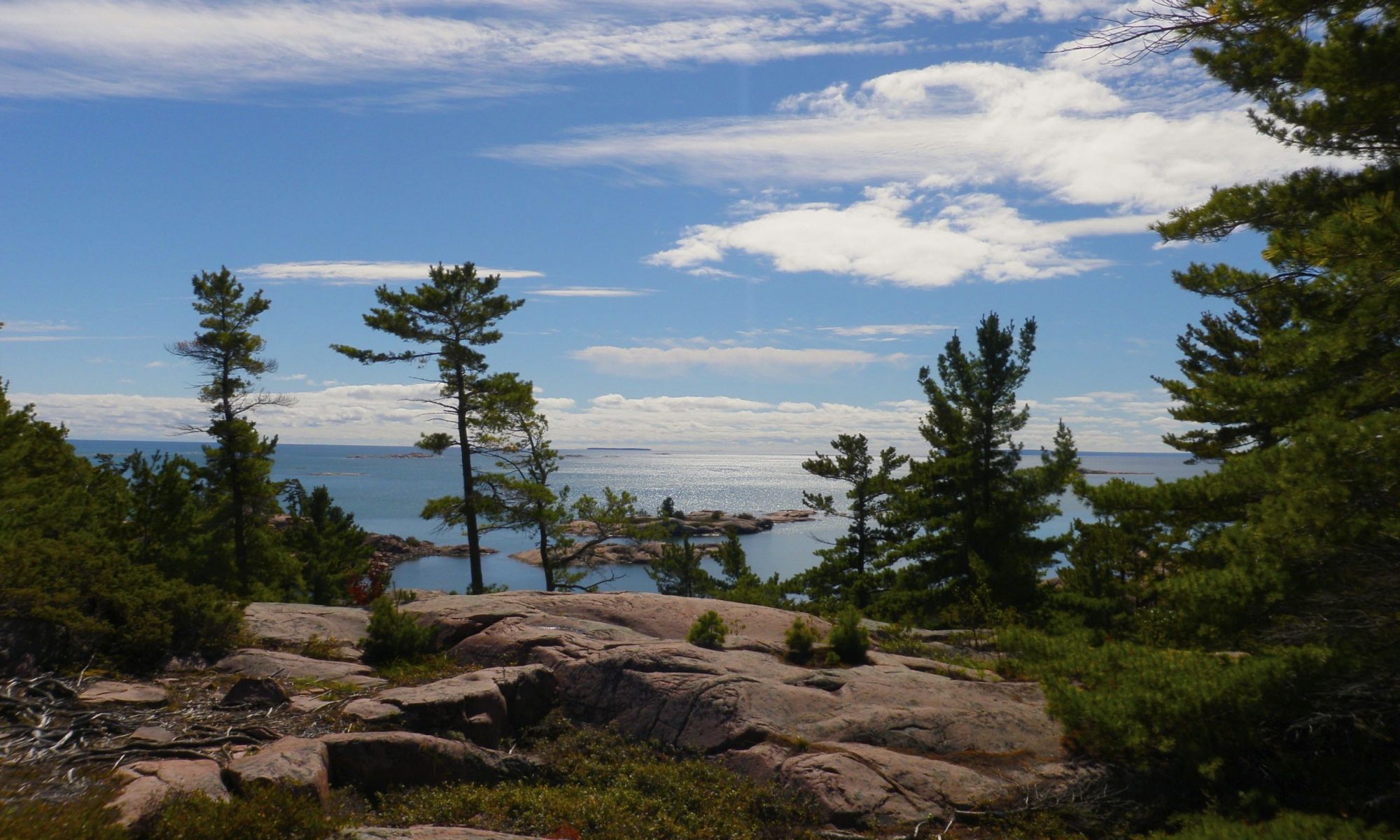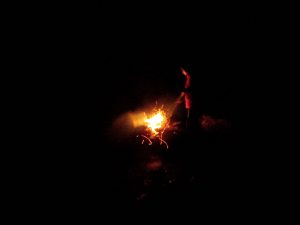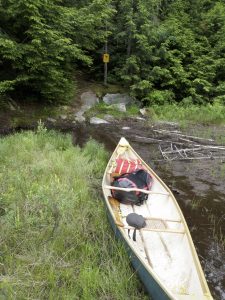McCrae Lake lies right next to Georgian Bay, but with just enough of a rock ledge that there are (usually) no motor boats. Situated in a conservation reserve it’s devoid of cottages, and yet surrounded by a variety of the unique terrain that makes Georgian Bay such a lovely place to visit.
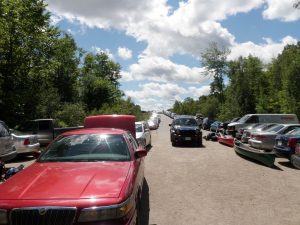
The downside are the crowds. Located just over an hour from the GTA it attracts huge numbers of weekenders. The access road is often so packed that it’s hard to find a parking spot. Finding a campsite can be almost impossible, and when you do there’s a good chance that it’s been trashed. Still, it’s such a beautiful spot that I’ve returned several times for day trips.
This was my first visit to McCrae, and the lake wasn’t even my goal. I wanted to find the “Sunken Barge” geocache on Georgian Bay. The description didn’t mention where we should put in, so I checked my copy of Kevin Callan’s “A Paddler’s Guide To Cottage Country” and he had a route from McCrae lake up to the cache.
McDonald Lake
After a short portage down from the parking area we put in on McDonald Lake. McDonald is really a small beaver pond. Even though it has a view of cars whizzing by on the highway it’s a beautiful spot in its own right. The pond weaves back and forth, to the portage. Apparently at times a lift-over may be required to get to the portage, but I’ve never encountered it.
The portage is a huge rock shelf that creates a small waterfall where the pond empties into McCrae Lake. An ATV bridge has been built over the falls, and while it is ugly, it does provide a vantage point from which to take photos.
On our first visit some campers were stationed almost at the base of the portage. They had a huge tent and cases of beer. Rather then carry all of their gear over the portage they just camped right there. I’ve seen people coming out of McCrae with lots of questionable camping gear including lawn chairs, coolers, and even chainsaws. It may be a conservation reserve, but it sure isn’t very well protected.
We found our first geocache of the day, “McCraezy Falls” along the portage. The portage itself isn’t particularly difficult, even if it is a bit steep at each end. The far end of the portage is a lovely sandy beach at the base of the falls. We were carrying the boat over our heads and I couldn’t see much when all of a sudden I spotted a naked woman! I did a double take and realized that she was enjoying the rapids in a flesh coloured bikini.
McCrae Lake
After the beach McCrae feels more like a creek than a lake, and it winds back and forth between boggy areas. There are some beaver lodges here. It’s a nice area, but it pales in comparison to what you’ll soon encounter. When you turn the last corner the lake opens up ahead. Twisted rock formations on either side frame a small rocky island. At sunset the light will catch these rocks and make them glow with a red light. It’s a really pretty spot.
It’s not a very large lake, but it’s spidery, with several bays, so navigation can be a bit tricky. There’s a large island in the middle of the lake, and in the far end of this bay are some cliffs that are popular with rock climbers.
We didn’t visit those cliffs on this trip, because we were pushing on to our destination geocache. We crossed the lake to where a small rock ledge separates McCrae from Georgian Bay. The lake tumbles over the rocks and forms a small rapid. Scenic cliffs tower on either side. It’s a really pretty spot, and the far side is a popular anchorage for cottagers on the bay who visit the area for picnics. There’s another geocache hidden here, “McCraezy on the Bay” at the top of one of the cliffs next to a lovely campsite.
In addition to the geocache there are two shrines located here. One is a small altar built into the cliff, and the second huge cross mounted high up on the same side and visible from the bay.
Georgian Bay
The next part of our trip was a very long paddle up the bay to the mouth of the Gibson River. I must say I can’t really recommend this part of the trip. Don’t get me wrong, the scenery is still amazing, but the shore is littered with cottages, and after the serenity of McCrae Lake it was kind of disappointing to struggle to paddle through waters infested with motor boats.
It took us a long time to reach the river. When we did, not only did the water calm down, there were far fewer boats and no cottages. We didn’t have long to travel up the river before we reached our destination — an old sunken logging barge. The geocache had been hidden underwater in the ruins of the barge. We found the cache and retraced our steps.
Even though the paddle through cottage country was far from being a highlight of the trip exploring the old barge was pretty neat.
Conclusion
We made it back to McCrae Lake just in time to catch the sunset. It’s a pretty spectacular place to be during the golden hour. The water of the lake was calm and we paddled slowly back to the portage as we took in the scenery. We had to tie the canoe to the car in the dark, and then we took a short hike to find one last geocache, “Not Going McCraezy”.
Tips
McCrae Lake is spectacular, but I don’t know how much I’d recommend it as a camping destination. The crowds and the mess are rather unappealing. I tried to camp at McCrae once, but was advised in the parking lot that all of the good sites were taken so I went elsewhere. If you do decide to camp at McCrae I’d forgo the trip through cottage country as I felt it detracted from the experience.
Difficulty
- This is a very easy trip. The only portage is along a well worn easy to follow trail, but the rocks can get slippery in the rain.
- This trip can easily be done in one day, so it makes for a very easy two day camping trip.
Remoteness
- McCrae Lake is a spectacular gem. It would be unspoiled were it not for the crowds. But the crowds are pretty bad.
- Even though this is an ideal two day trip I wouldn’t recommend it on a weekend. Most of the sites will be taken early on Friday. If you do want to go on a weekend it’s best to start your trip early.
- There are far less crowds in the early spring and the fall. I’ve been here on day trips in the shoulder season and it was the only time that camping seemed possible.
